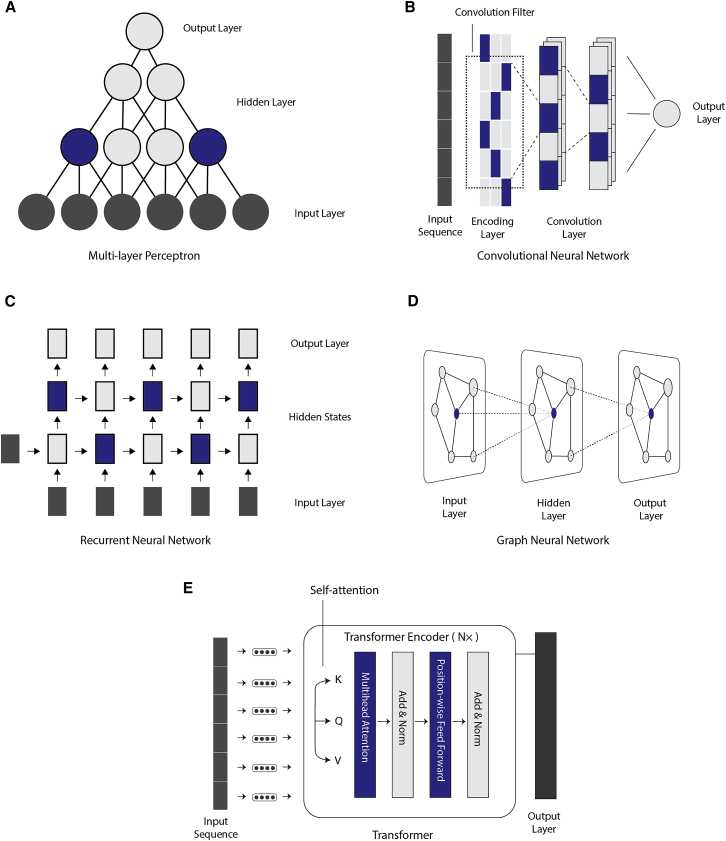题目: Applications of deep learning in understanding gene regulation
链接: https://europepmc.org/article/med/36814848
发表时间:2023.1.11
用于基因调控的神经网络包括: 多层感知机、卷积神经网络、循环神经网络、图神经网络、Transformers
用于基因调控的神经网络类型
多层感知机(multi-layer perceptrons):The input layer of MLPs directly takes in the data values from the input dataset and is subsequently processed by one or more hidden layers. Finally, an output layer summarizes the processed information of the earlier hidden layers to produce the final prediction.
卷积神经网络convolutional neural networks (CNNs): The CNNs employ convolution filters to process sequential or image data in a way that respects the spatial structure of the data.
循环神经网络Recurrent neural network(RNN):To handle long-range interactions of sequential data, recurrent neural networks (RNNs) such as gated recurrent units (GRUs)21 and long short-term memory (LSTM)22 have received particular interest in biological sequence analysis (Figure 2C).The RNNs employ hidden states in the network that will remember sequential information at earlier locations. These hidden states benefit the modeling of long-range interactions
图神经网络Graph neural networks (GNNs) are designed to handle structured datasets that are represented as a graph (Figure 2D).GNNs also have input, hidden, and output layers in their architectures. In contrast to plain MLPs that handle individual data points independently, the hidden layers and output layers of GNNs respect the topological structure of the dataset.
Transformers have also received a lot of attention for biological sequence data processing (Figure 2E).Transformers are powerful learners of sequential data, partly due to their employment of the self-attention mechanism that handles the pairwise interdependencies between the sequence elements. Transformers are also popular choices for self-supervised learning on biological sequences.

(A) Multi-layer perceptron.
(B) Convolutional neural network.
(C) Recurrent neural network.
(D) Graph neural network.
(E) Transformer.